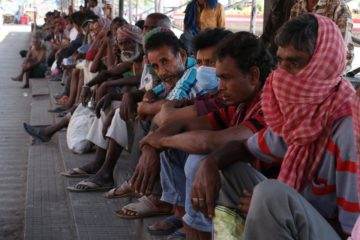Microfinance has been tipped as being a “miracle” and “the next big thing” in poverty alleviation, while others question the extent of its impact and whether it in fact works at all. But what is microfinance?
Microfinance is the provision of financial services to the world’s unbanked population with the primary aim of alleviating poverty through entrepreneurship. This includes anything from health to insurance but mainly consists of small business loans typically in the range of $100-$1000.
In LEDCs, over 65% of the population have no access to basic banking services. Individuals are often rejected by commercial banks due to lack of formal identity, address or collateral making them too risky as clients. Many of these individuals are entrepreneurs and small businesses who lack the capital to grow their businesses and pull themselves out of poverty. The only access these businesses have are loans from loan sharks on very poor terms. For example, a typical fruit seller in Chennai would borrow Rs.1000 at the beginning of the day and repay the loan after a day of trade with an interest rate of 5%. Over the course of a month, this works out as an interest rate of over 300%. Such loans cripple borrowers with debt often leaving them in greater poverty than initially. As such, microfinance was created to bridge the gap and extend the banking system to provide sustainable finance to the poor, to allow them to grow their businesses and break out of poverty.
Research conducted shows that the banks are wrong to exclude the poor from their services and that they are indeed bankable. Trials were conducted, giving out group loans to small business owners living in poverty which found that despite not having collateral or records, women had a very high business success rate when given small loans and were subsequently able to repay these loans and substantially increase their income. Through doing so they were able to improve the standard of living for their households, most importantly improving access to education and healthcare thereby increasing the long-term financial security of the household.
Microfinance was first pioneered in the 1970s when Mohammad Yunus founded the Grameen Bank in Bangladesh. It focussed on giving group micro loans to women in rural areas in order to allow them to engage in entrepreneurial activities and increase their welfare. Yunus started by giving out loans of $27 to a group of 42 families and by 2008 had loaned $7.6 billion to the poor representing one of the most successful microfinance institutions ever founded, inspiring thousands others to be founded across the world. Microfinance has continued to grow rapidly with an ever increasing outreach.
The core principles of microfinance are to provide sustainable financial services to the unbanked. In order to be sustainable, microfinance institutions must be able to make back the money they lend in order to continue to lend and generate socio-economic growth. Each institution develops its own method of assessing the viability of an individual for a loan. The unbanked today often do not have formal identification, address or existing collateral, making conventional credit rating systems unsuitable.
As a result, to reduce risk, loans are given to groups of entrepreneurial women, which have been trialled to be the demographic with the highest repayment rates. Field officers are then sent to assess the risk of lending to the individual members of the group. If all are deemed to pass the benchmark, the group is given a loan with which the members can invest in the way they deem best. Lending as a group allows members to exert pressure on non-paying members or cover each other’s payments in the case of default. This means higher repayment rates and consequently more funds to then be lent out once more.

One example of which is Mary, a farmer from Kenya. As a farmer, Mary would have to work long hours, making barely enough to feed her family. Microfinance institution Transfedha gave Mary $58 with which to buy and raise cattle to sell milk in her local village. As a result, she has been able to grow this loan into revenue of over $800 enabling her to “not only provide food for her children but to also provide education and good healthcare”, thus allowing Mary to pull herself out of poverty as well as securing a better future for her children. The loan was fully repaid with interest and the funds were used in another loan to continue the cycle.
However, microfinance is not without its problems. Although in the majority of cases, microfinance empowers women by including them in the productive economy in societies which do not typically give women such opportunities, there have been reported cases of women being abused by husbands due to their greater influence in the role of the household. Furthermore, complaints have been made of interest rates being set too high, sending already poor into debt spirals with debt collectors using unethical methods to recollect payments.
As a new and rapidly developing industry, microfinance has shown the potential to cause significant socio-economic development and alleviate poverty. As the operation of microfinance institutions continues, credit rating systems as well as interest rates set should improve to avoid some of the problems experienced initially. Today, the World Bank estimates that over 16 million people are served through around 7000 MFIs across the world with 500 million families benefiting from these small loans.
Sources:
Poor Economics: A Radical Rethinking of the Way to Fight Global Poverty (2011) – Abhijit Banerjee, Esther Duflo
http://www.microfinanceinfo.com/history-of-microfinance/


